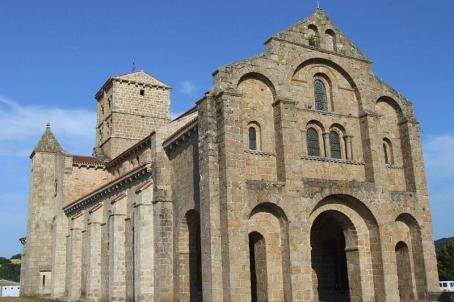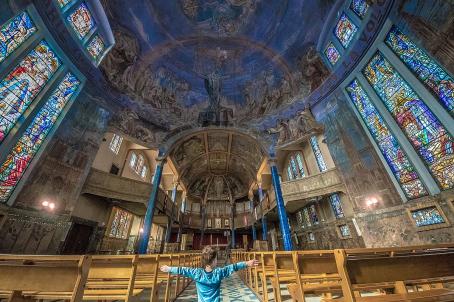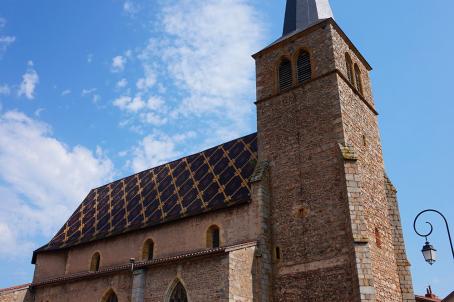Church of Saint-Nicolas

Located at Droiturier in the Allier, the Saint Nicholas Priory Church dates from the 11th-12th century. This beautiful Romanesque church, with some elements of Gothic style, has fascinating furnishings and décor; you will be able to admire historical capitals and neo-classical murals made in Trompe l'Oeil. Outside, a landscape restoration shows the whole priory as it was before.
About this building
The imposing Church of Saint Nicolas, located in Droiturier in the Allier, dates from the 11th-12th century. Outside, a landscape restoration shows the whole of the priory, including the church, the conventual building (the current town hall) and the now-defunct cloister, which was a Benedictine priory of the Mozac Abbey in Auvergne, which later came under the authority of Cluny.
Built in the Romanesque style, the church was designed in the form of a Latin cross, consisting of a large nave of three spans with vaulted ribs dating from the early Gothic period, with aisles under semi-circular arches. The transept ends with two chapels in apsidioles, while the central apse is flanked by two chapels on both sides of the choir.
Originally, the crossing of the transepts was surmounted by a Romanesque bell tower, which was destroyed in the nineteenth century. It was then replaced by a newer bell tower, which was built on the facade of the old church.
The decor inside the church of Saint Nicolas is remarkable: on either side of the front door stand two Romanesque columns on which there are two capitals: they represent the corded monkey and the tree of life, which refer to the Apocalypse. In the southern chapel, dedicated to the Blessed Virgin, the walls are decorated with neo-classical Trompe-l'œil paintings dating from the mid-18th century. In this chapel there are also two statues from the eighteenth century, one representing a Madonna and Child, the other St. Catherine of Alexandria.
Another chapel, dedicated to Saint Nicolas, contains a statue of the Saint in gilded and silvered polychrome wood which dates from the 17th century. Other elements, such as baptismal fonts or paintings, can be admired in the church.





